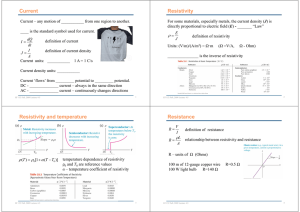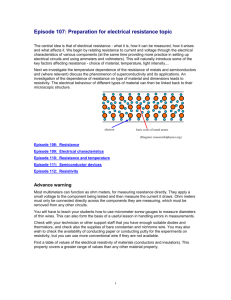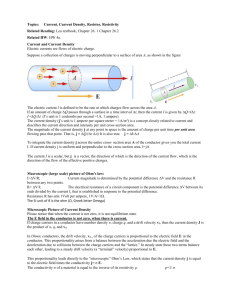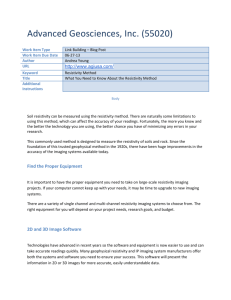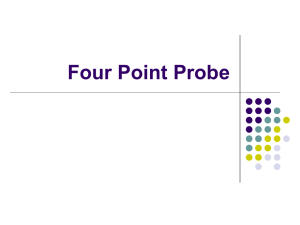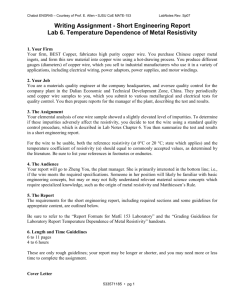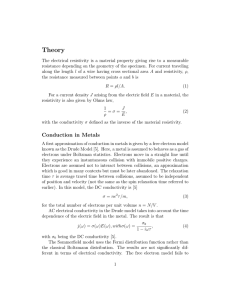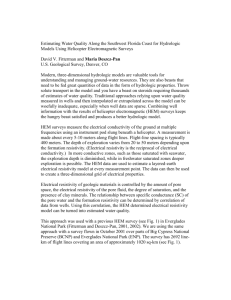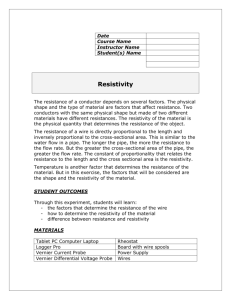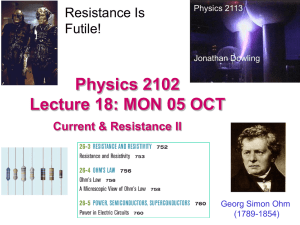3D inversion of the resistivity and IP data acquired in the
advertisement
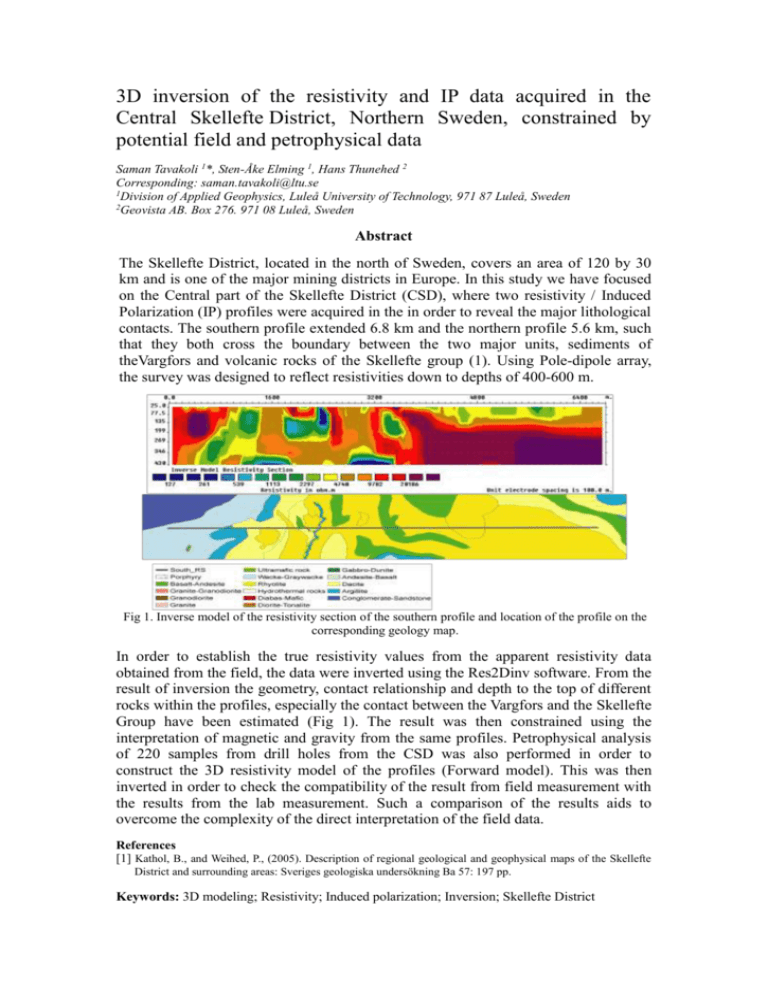
3D inversion of the resistivity and IP data acquired in the Central Skellefte District, Northern Sweden, constrained by potential field and petrophysical data Saman Tavakoli 1*, Sten-Åke Elming 1, Hans Thunehed 2 Corresponding: saman.tavakoli@ltu.se 1 Division of Applied Geophysics, Luleå University of Technology, 971 87 Luleå, Sweden 2 Geovista AB. Box 276. 971 08 Luleå, Sweden Abstract The Skellefte District, located in the north of Sweden, covers an area of 120 by 30 km and is one of the major mining districts in Europe. In this study we have focused on the Central part of the Skellefte District (CSD), where two resistivity / Induced Polarization (IP) profiles were acquired in the in order to reveal the major lithological contacts. The southern profile extended 6.8 km and the northern profile 5.6 km, such that they both cross the boundary between the two major units, sediments of theVargfors and volcanic rocks of the Skellefte group (1). Using Pole-dipole array, the survey was designed to reflect resistivities down to depths of 400-600 m. Fig 1. Inverse model of the resistivity section of the southern profile and location of the profile on the corresponding geology map. In order to establish the true resistivity values from the apparent resistivity data obtained from the field, the data were inverted using the Res2Dinv software. From the result of inversion the geometry, contact relationship and depth to the top of different rocks within the profiles, especially the contact between the Vargfors and the Skellefte Group have been estimated (Fig 1). The result was then constrained using the interpretation of magnetic and gravity from the same profiles. Petrophysical analysis of 220 samples from drill holes from the CSD was also performed in order to construct the 3D resistivity model of the profiles (Forward model). This was then inverted in order to check the compatibility of the result from field measurement with the results from the lab measurement. Such a comparison of the results aids to overcome the complexity of the direct interpretation of the field data. References [1] Kathol, B., and Weihed, P., (2005). Description of regional geological and geophysical maps of the Skellefte District and surrounding areas: Sveriges geologiska undersökning Ba 57: 197 pp. Keywords: 3D modeling; Resistivity; Induced polarization; Inversion; Skellefte District



